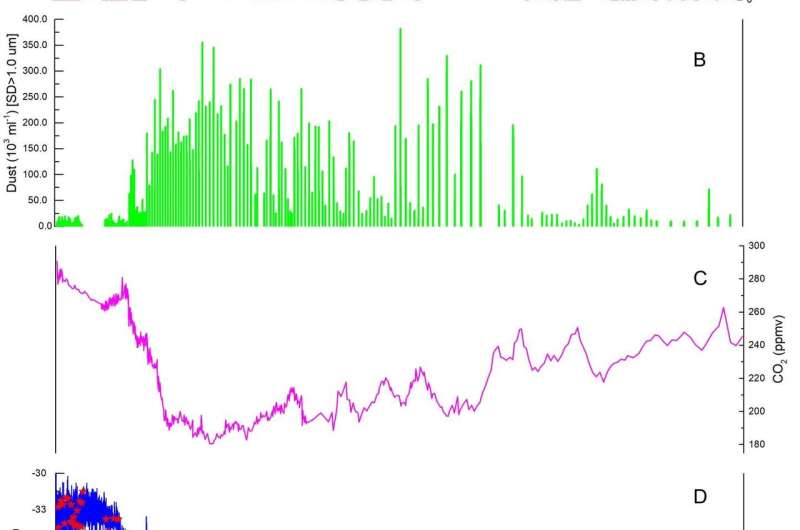Iron in the Greenland ice core relative to Asian loess records over the past 110,000 years

To weigh in on the 'iron hypothesis' in the North Greenland Eemian Ice Drilling (NEEM) ice core, Cunde Xiao and his colleagues firstly reconstructed the bioavailable Fe data in this deep ice core from the northern Hemisphere over the past 110 kyr B.P., which suggested that the dissolved Fe (DFe) records in NEEM ice core were significantly anti-correlated with the carbon oxide (CO2) concentrations during the cold periods. The pattern of Fe concentration was extremely similar to that of the number of dust particles. The results also emphasized that the changes of the Fe fertilization effect could not be explained by a simple linear relationship with the glacial-interglacial changes in the CO2 concentration in the atmosphere.
This study focused on the linkages between NEEM ice core and Chinese loess record over the past 110 kyr B.P. The changes of Fe fluxes in the NEEM ice core were in phase with that archived in Chinese loess, where the mineral dust distribution was controlled by the vast Asian deserts and large-scale wind pattern. They suggest that the dust input on a hemispheric scale were most likely driven by the changes in solar radiation during the last glacial-interglacial cycle, as a response to Earth's orbital changes.
In the last glacial-interglacial cycle, the ratios between dissolved Fe and total dissolved Fe (DFe/TDFe) were higher during the warm periods (i.e., post-Industrial Revolution, the Holocene and the Last Interglacial period) than during the main cold period (i.e. the Last Glacial Maximum), indicating that the Fe fertilization effect was more complex during the Holocene, due to the presence of different composition of dust associated, with various grain sizes and other factors.
Although the burning of biomass has released large amounts of Fe-contained aerosols since the Industrial era, no significant responses were observed in Fe variations during the same time period.
More information: Cunde Xiao et al, Iron in the NEEM ice core relative to Asian loess records over the last glacial-interglacial cycle, National Science Review (2020). DOI: 10.1093/nsr/nwaa144
Provided by Science China Press





















